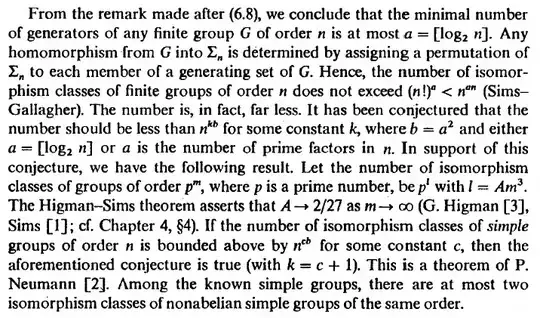Let say cardinality of set S is $n=|S|$.
We know that there are $n^{n^2}$ all binary operations on that set.
To find out how many groups can be created by this set and by those operations, we need not only to know how many associative operations there are on that finite set.
But also this set and given operation must satisfy specific axioms: closure, associativity, identity and invertibility.
So how find out how many different groups can be created on that finite countable set?
